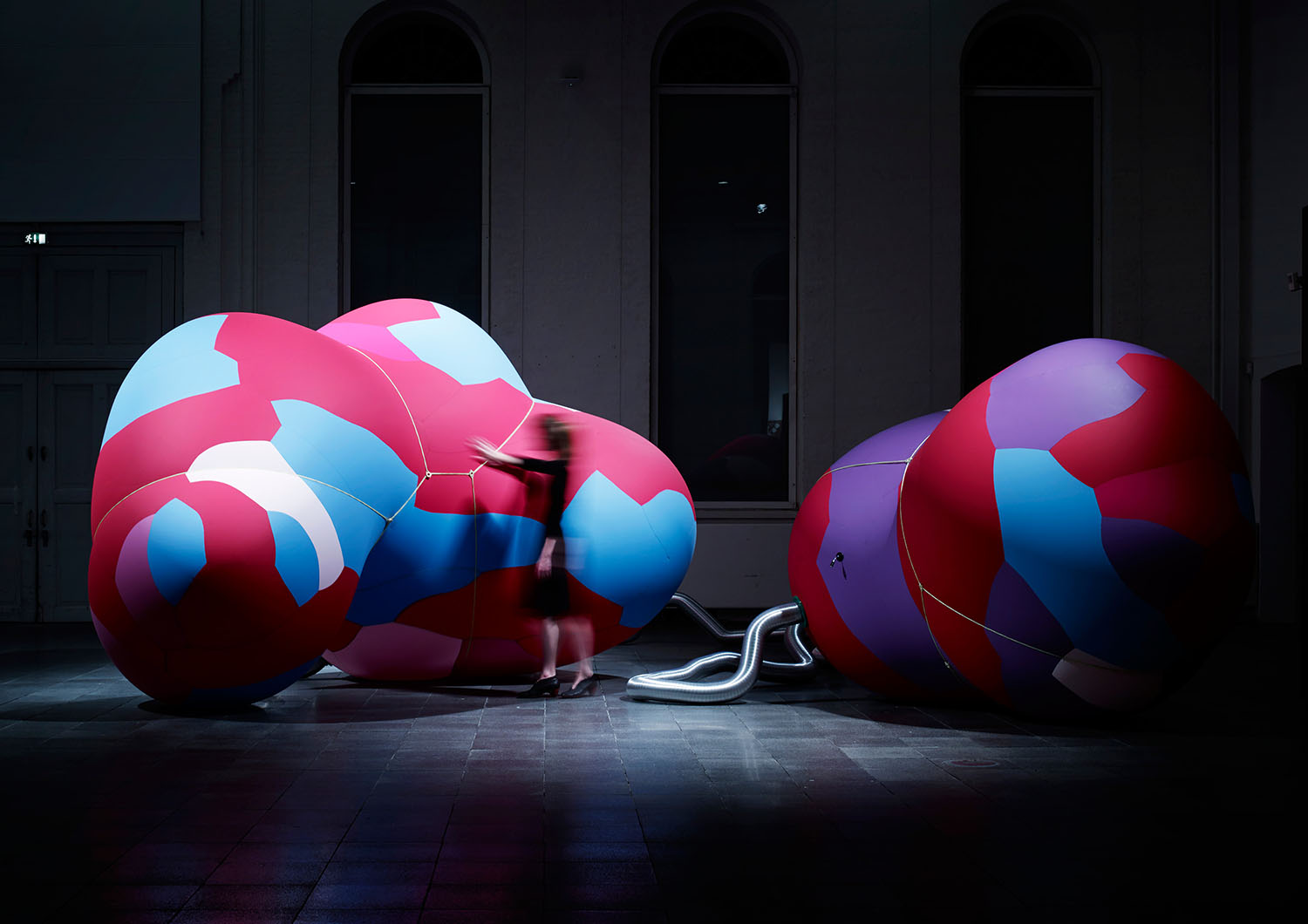
Exhibition14 Sep – 17 Nov 2018
Dynamics of Air
How do designers, artists, scientists and researchers work with an intangible atmospheric medium such as air? Explore it, alter it, adjust it,…
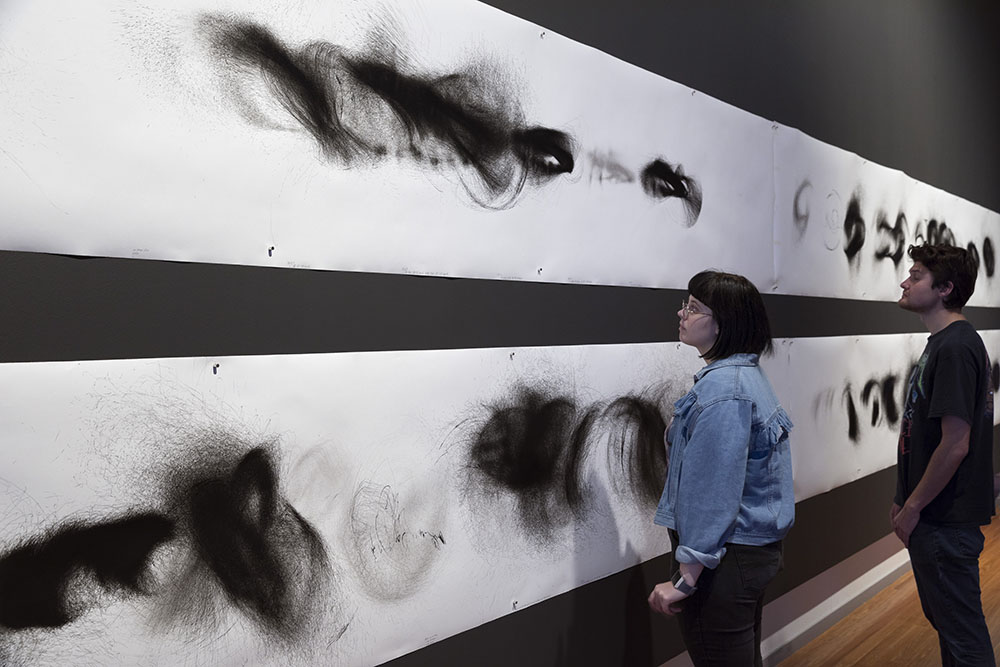
As part of the exhibition Dynamics of Air,artist Cameron Robbins will talk about his impressive ‘wind-drawings,’ each spanning five metres long.
The drawings are created via a wind-powered mechanical instrument, which transcribes weather patterns into abstract storms of ink onto paper. Accompanying the drawings in this exhibition is a video of the wind machines in action, capturing a symphony of pen scratchings and winding rhythms.
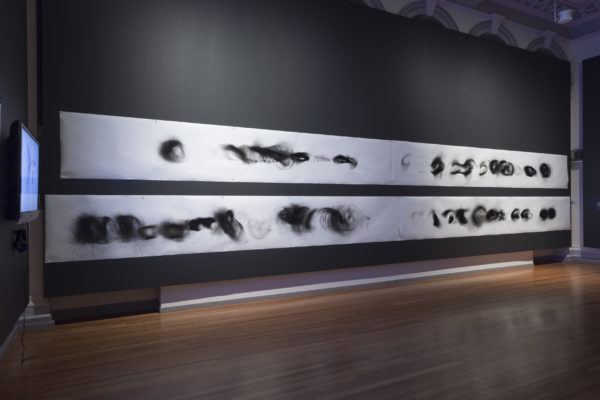
These drawings were originally installed and recorded at the Museum of Old and New Art (Mona) in Tasmania, and received popular admiration among visitors.
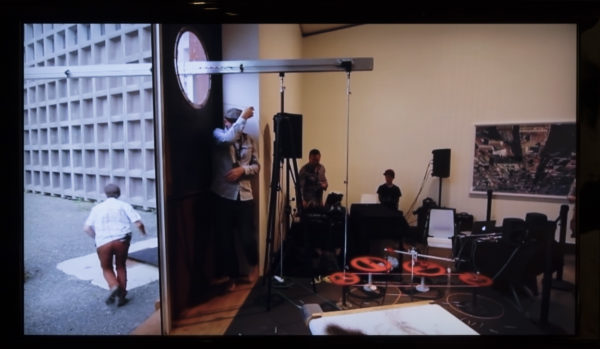
Robbins describes how these drawings were shaped by “south-easterly weather systems racing up the Derwent Estuary off the Southern Ocean…driving the machine to make its marks.”
In summer, Robbins adds that “the northerlies spill over the museum creating turbulent airflow and different drawings.”
The self-devised drawing system, according to Cameron, uses “wind speed to drive the pen, wind direction to swivel the drawing board, and time and electricity to move the paper slowly along at 250 cm per week. An entire weather system leaves its trace — around five metres equates to ten days.”
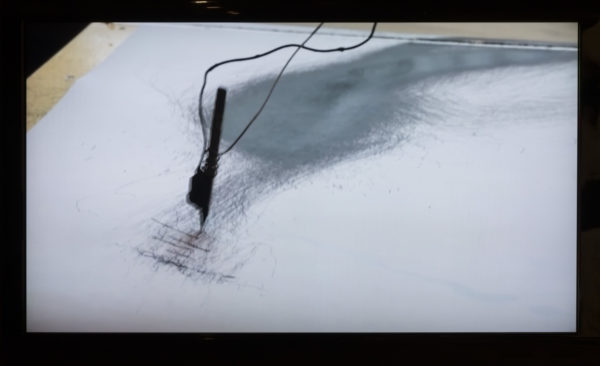
To develop this machine and achieve a “creative synergy”, it took a great deal of experimentation and learning from marine, structural and mechanical engineers, and bicycle machinists.
Robbins’ drawings can also be explained mathematically. Chief Physicist of the Bureau of Meteorology “excitedly wrote a page of equations” based off the wind-drawings, and let him know that “he had stumbled upon a genre of diagram used in weather modelling.” Robbins saw this a “a happy meeting place” between his own processes and more scientific methodologies.
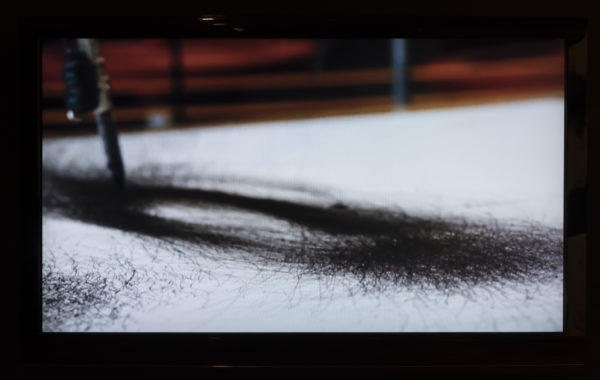
A jazz musician as well as an artist, Robbins performs live music in concert with amplified sounds of his drawing machines. This “sound performance” connects the natural environment with the cultural context of Mona.
This affinity for capturing nature can be traced back to Robbins’ love of surfing; something he often did throughout his early life. “When you understand ocean waves in terms of wavelength and frequency, it helps explain why sitting in the ocean for hours directly connects you with the greater natural world, beyond the oceans and into the multiverse.”
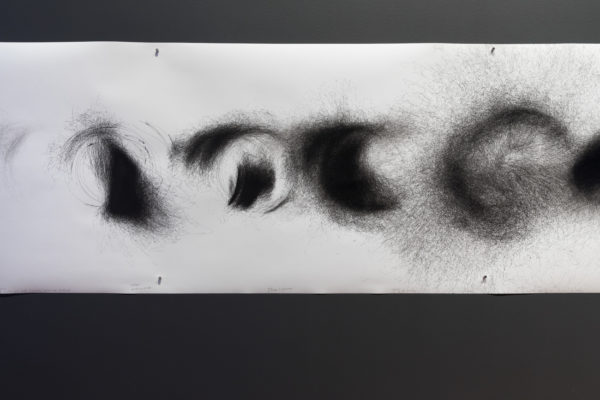
This eventually fed into his “understanding of Chaos Theory”, and “the development of cyclical, orbital drawing instruments that glimpse the underlying dynamics” of the natural world.
To put it in simple terms, “Chaos Theory”, Robbins explains, “is a branch of mathematics developed by Benoit Mandelbrot as a method of quantifying natural forms like clouds, plants, coastlines, which are all very difficult to measure.”
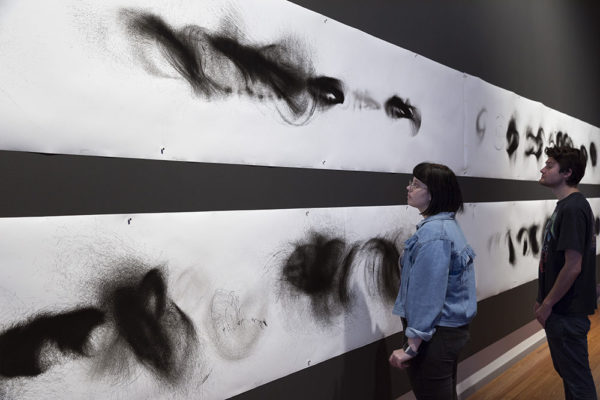
With a lightness of touch and variety of marks, Robbins’ drawings expressively evoke the unpredictability and ‘chaos’ of natural phenomena. After exhibiting these drawings widely, he has observed that “people respond directly and emotionally to drawings; like music, it seems to be the multiverse’s payoff for non-permanency.”
Story by Calum Alexander, RMIT Gallery intern
Please book your free ticket via Eventbrite,click here!
Images are by Mark Ashkanasy,RMIT Gallery, 2018.